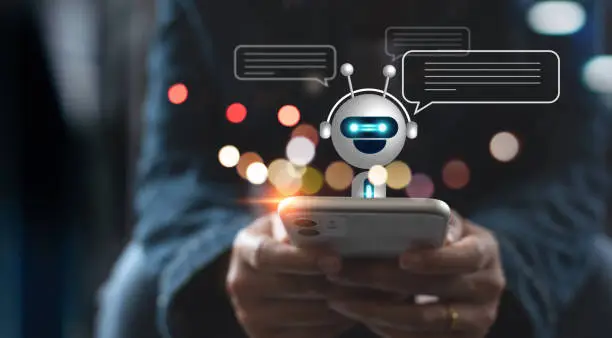How Image to Video AI is Revolutionizing Content Creation

In an era where content is king, the demand for fresh, engaging, and visually appealing material has never been higher. With the rise of social media, e-commerce, and digital marketing, businesses and creators are constantly seeking innovative ways to capture their audience’s attention. One of the most groundbreaking advancements in this realm is the emergence of Image to Video AI, a technology that transforms static images into dynamic videos. This article explores how this innovative tool is reshaping content creation, enhancing engagement, and providing new opportunities for storytellers across various industries.
Understanding Image to Video AI
What is Image to Video AI?
Image to Video AI refers to the use of artificial intelligence and machine learning algorithms to convert static images into videos. By analyzing the content of images, AI can generate animations, transitions, and narratives that bring still images to life. This technology harnesses various techniques, including computer vision, natural language processing, and deep learning, to create engaging video content from simple visuals.
How Does It Work?
The process of transforming images into videos typically involves several key steps:
- Image Analysis: The AI system analyzes the input images to understand their content, context, and features. This includes recognizing objects, backgrounds, and potential narratives within the images.
- Scene Generation: Based on the analysis, the AI generates a sequence of scenes, determining how each image will transition into the next. It may use techniques such as panning, zooming, or adding effects to create a more dynamic experience.
- Audio Integration: To enhance engagement, the AI often adds background music or voiceovers, tailoring the audio to match the visual content and overall narrative.
- Final Compilation: The system compiles the images, animations, and audio into a cohesive video format, ready for sharing across various platforms.
The Benefits of Image to Video AI in Content Creation
Enhanced Engagement
In today’s fast-paced digital landscape, grabbing and retaining the audience’s attention is crucial. Studies show that video content significantly outperforms static images in terms of engagement. Image to Video AI helps creators leverage this trend by turning eye-catching visuals into captivating videos that keep viewers watching longer. The dynamic nature of videos encourages users to engage with the content, share it, and interact with brands or creators.
Efficiency in Content Production
Traditionally, creating videos from images required significant time, resources, and expertise. Filming, editing, and post-production processes can be labor-intensive and costly. Image to Video AI streamlines this process, allowing creators to generate high-quality videos quickly and efficiently. With just a few clicks, users can transform a collection of images into a polished video, saving both time and effort.
Cost-Effectiveness
For small businesses and individual creators, budgeting for video production can be challenging. Image to Video AI eliminates the need for expensive equipment, professional video editing software, or hiring skilled videographers. By using AI tools, anyone can produce professional-looking videos at a fraction of the cost, making high-quality video content accessible to all.
Consistency in Branding
Maintaining a consistent brand image across various platforms is essential for building recognition and trust. Image to Video AI enables creators to produce videos that align with their brand aesthetics and messaging effortlessly. By using consistent styles, colors, and themes, brands can reinforce their identity while delivering engaging video content.
Personalization and Customization
Personalized content resonates more with audiences, leading to higher engagement rates. Image to Video AI allows creators to tailor their videos to specific target audiences. By analyzing viewer preferences and behaviors, the technology can suggest or create videos that cater to individual interests, enhancing the overall user experience.
Applications of Image to Video AI
Marketing and Advertising
Image to Video AI has emerged as a game-changer in marketing and advertising. Brands can create visually stunning promotional videos that highlight their products or services without the need for extensive video production. By converting eye-catching images into engaging videos, companies can effectively convey their messages and drive conversions.
Social Media Marketing
Social media platforms prioritize video content, making it crucial for brands to leverage this format. Image to Video AI enables marketers to quickly create video ads, product showcases, or promotional content tailored for various social media platforms. By utilizing compelling visuals and dynamic storytelling, brands can capture their audience’s attention and boost their online presence.
E-Learning and Educational Content
In the education sector, Image to Video AI has the potential to revolutionize the way information is presented. Educators can transform static images from presentations, textbooks, or study materials into engaging video lessons. This approach enhances learning experiences by making complex topics more accessible and easier to understand.
Enhancing Visual Learning
Visual learners often retain information better when presented with dynamic content. By converting images into videos, educators can create engaging learning resources that cater to diverse learning styles. This adaptability makes educational content more effective and enjoyable for students.
E-commerce
For e-commerce businesses, showcasing products effectively is vital for driving sales. Image to Video AI allows online retailers to create compelling product videos from high-quality images. These videos can demonstrate product features, provide visual context, and offer potential buyers a better understanding of the items they are considering.
Virtual Try-Ons and Demonstrations
Incorporating image to video AI into e-commerce platforms can enhance the shopping experience. Businesses can create videos that simulate virtual try-ons for clothing, accessories, or makeup, allowing customers to visualize how products will look in real life. This interactive approach can increase customer confidence and reduce return rates.
Case Studies: Success Stories
The Fashion Industry
Several fashion brands have successfully utilized Image to Video AI to enhance their marketing strategies. By transforming lookbook images into dynamic fashion videos, these brands can showcase their collections more effectively. The resulting videos not only attract more views on social media but also drive traffic to their online stores, ultimately increasing sales.
Real Estate
In the real estate sector, agents and agencies have embraced image to video AI to create virtual tours of properties. By converting high-quality images of homes into immersive video walkthroughs, potential buyers can explore listings from the comfort of their homes. This innovative approach has proven to be a powerful tool for attracting buyers and closing deals.
Travel and Tourism
Travel companies have leveraged image to video AI to promote destinations and experiences. By transforming stunning travel images into captivating videos, these companies can inspire potential travelers and showcase the beauty of their offerings. Engaging video content has proven effective in driving interest and bookings in the competitive travel industry.
Popular Tools and Platforms
While there are numerous image to video AI tools available, they typically share common features that make them effective. Here are some key functionalities to look for when selecting a tool:
User-Friendly Interface
An intuitive and user-friendly interface allows creators to navigate the platform effortlessly. A straightforward design enables users, regardless of their technical expertise, to create engaging videos with ease.
Customization Options
Look for AI apps that offer customization features, allowing users to adjust animations, transitions, and audio elements. The ability to personalize videos helps align content with brand identity and storytelling preferences.
High-Quality Output
Quality matters when it comes to video content. Ensure that the tool you choose can generate high-resolution videos that look professional and polished.
Exporting Capabilities
Consider tools that allow exporting in various formats suitable for different platforms. Whether it’s for social media, websites, or presentations, having flexible exporting options is essential for effective content distribution.
Future Trends in Image to Video AI
Increased Automation
As technology continues to evolve, we can expect to see increased automation in image to video AI. Future advancements may enable even more seamless integration of AI into the content creation process, reducing the time and effort required to produce high-quality videos.
Enhanced Personalization
The future of image to video AI holds the promise of even greater personalization capabilities. With improved algorithms and data analytics, AI tools may become more adept at understanding audience preferences and tailoring video content accordingly.
Integration with Virtual Reality (VR) and Augmented Reality (AR)
As VR and AR technologies gain traction, the potential for integrating image to video AI with these platforms is immense. This fusion could create immersive experiences, allowing users to engage with content in entirely new ways.
Growth of User-Generated Content
The rise of user-generated content will likely influence the evolution of image to video AI. Tools that empower users to create their videos from images could drive engagement and foster a sense of community around brands and creators.
Conclusion
Image to Video AI is undoubtedly revolutionizing the landscape of content creation. By transforming static images into dynamic videos, this technology enables creators to engage audiences more effectively, streamline production processes, and reduce costs. From marketing and education to e-commerce and beyond, the applications of image to video AI are vast and varied.
As we move forward, embracing this innovative tool will be essential for anyone looking to stay ahead in the competitive digital space. By leveraging image to video AI, creators can unlock new opportunities for storytelling, enhance engagement, and ultimately thrive in an ever-evolving content landscape.



